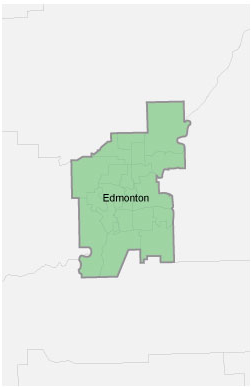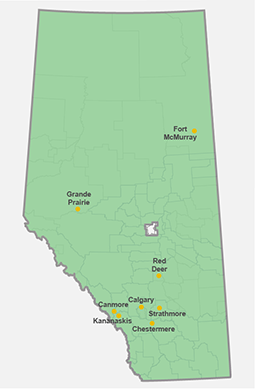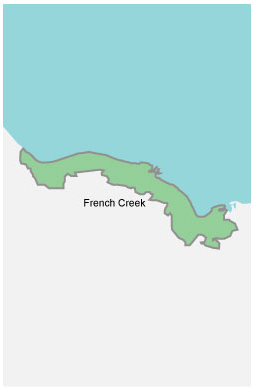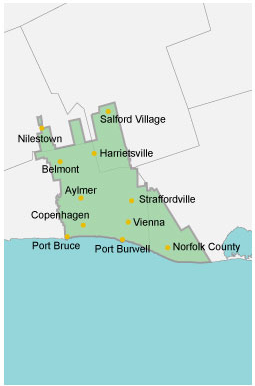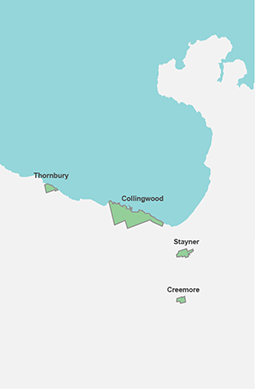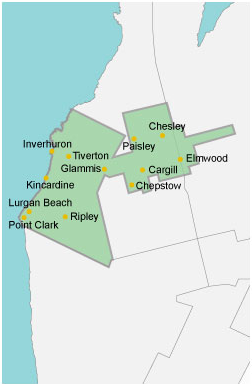Your Encor energy bill
Your Encor energy bill might seem a little complicated, but once you understand what you're looking at, it makes sense. It's basically the cost of the energy you use and the cost to deliver that energy to your home or business.
Charges for electricity and natural gas
Your bill is based on the terms and conditions you accepted when you signed up with Encor By EPCOR. There are 5 basic types of charges on your energy bill.
1. Energy charges
Energy charges are calculated by applying your energy plan rate to the actual amount of electricity or natural gas you used.
2. Administrative costs
The administrative fee covers the costs of customer service and billing. It pays for calculating and sending bills, friendly responses to all your questions, helpful advice in choosing the right Energy Plan, switching services or helping with moving arrangements. The administration fee is $0.32 per day, per site, for each electricity and natural gas service.
3. Distribution and transmission charges
D and T charges, or delivery charges, are the costs of delivering electricity and natural gas to customers. This includes meter reading and the costs of building, operating and maintaining the local and provincial systems and infrastructure that moves the energy into homes and businesses. These costs do not change based on the energy provider you choose but are based on where your property is located in the province.
4. Miscellaneous fees and charges
Miscellaneous fees and one-time charges appear on your bill as needed. They cover things like late fees, rush services, reconnection fees and duplicate bills.
5. Taxes
EPCOR is required to collect taxes, such as GST, on the services we provide.
The Federal Carbon Tax is a Government of Canada tax on carbon pollution (including natural gas) to encourage the reduction of emissions and encourage investments in clean technology. This is not an Encor by EPCOR charge, and every Albertan pays this tax, regardless of who their energy provider is.
For further details on the program, visit www.canada.ca or the UCA website.*
*2025 Update:
The Government of Canada has announced the Federal Carbon Tax has ended effective April 1, 2025, and as a result, EPCOR will no longer be required to collect the tax from Encor by EPCOR Natural Gas customers after this date. Federal Carbon Tax charges will still appear on bills for consumption up to and including March 31, 2025. Customers will see these charges on a bill received after April 1, 2025, but there will be no further charges as of April 1.
From April 1, 2025, onwards, the Federal Carbon Tax line item will continue to appear on the bill but will show a charge of $0.00.
Encor bill summary
The first page of your Encor bill is a summary of your energy and water use for the current billing period. If you don't have your own bill in front of you, you can view a bill example to see what the individual line items mean.
Here's what you owe
This billing summary includes information about your previous payments as well as any new charges and adjustments for the current billing period.
The total payment due is provided at the end of this list, along with a due date. If you signed up for Authorized Payment Withdrawals, the due date will be the date of withdrawal.
Highlights of this billing
Encor provides useful information that affects your monthly consumption, such as the number of days in your current billing period, your electricity usage for the billing period, and your average daily cost.
Usage graphs
The graph(s) on the front of your bill lets you visually track the energy you used each month. Did you purchase energy saving appliances? Install a smart thermostat? This tool helps you see how changes in your life impact your energy use and make adjustments to be more efficient.
Payment return slip
The Payment Return Slip clearly identifies your account number, amount owed, and the due date to ensure that your payment is processed quickly and accurately. If you are paying by mail, include the payment return slip in your envelope.
Encor bill details
The remaining pages of your Encor bill give you a breakdown of your energy usage and the associated fees charged to provide you with those services. These line items are charged by all energy retailers.
Details of your previous payments
This section provides details of your previous payment. If you did not pay your bill in full, you'll see a balance owing from your last billing period.
Details of your new charges
